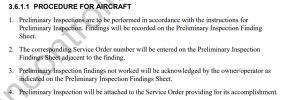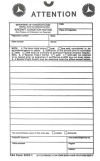AlleyCat67
Pre-takeoff checklist
- Joined
- Oct 5, 2017
- Messages
- 398
- Display Name
Display name:
AleyCat67
I'm hoping this ends up as a non-issue but I'd like to educate myself just in case.
I brought my plane (AA-5B) in for repainting a month ago, and was informed by their A&P/IA that because of a stop-drilled crack in the fiberglass tail cone the plane was "unairworthy". Mind you this is the same crack that's been there since 2017, and multiple other IA's have not said a word about it. In any case I didn't mind replacing the tail cone, so I gave the go-ahead for the work. Now I've been told that the original manufacturer no longer makes that part, although they have a lead on another vendor. In the meantime the IA refuses to "release" my plane due to the non-airworthy old tail cone. When I asked him directly who determines air worthiness he replied "I do, as Director of Maintenance".
If the new part vendor works out, then no problem. But lurking in the back of my mind is the possibility of these guys holding my plane for months over a non-issue. It was my understanding that I as owner/operator was ultimately in charge of determining airworthiness, and the IA always had the option of not signing off the logs, but couldn't "ground" a plane. Anyone dealt with a similar issue?
I brought my plane (AA-5B) in for repainting a month ago, and was informed by their A&P/IA that because of a stop-drilled crack in the fiberglass tail cone the plane was "unairworthy". Mind you this is the same crack that's been there since 2017, and multiple other IA's have not said a word about it. In any case I didn't mind replacing the tail cone, so I gave the go-ahead for the work. Now I've been told that the original manufacturer no longer makes that part, although they have a lead on another vendor. In the meantime the IA refuses to "release" my plane due to the non-airworthy old tail cone. When I asked him directly who determines air worthiness he replied "I do, as Director of Maintenance".
If the new part vendor works out, then no problem. But lurking in the back of my mind is the possibility of these guys holding my plane for months over a non-issue. It was my understanding that I as owner/operator was ultimately in charge of determining airworthiness, and the IA always had the option of not signing off the logs, but couldn't "ground" a plane. Anyone dealt with a similar issue?





